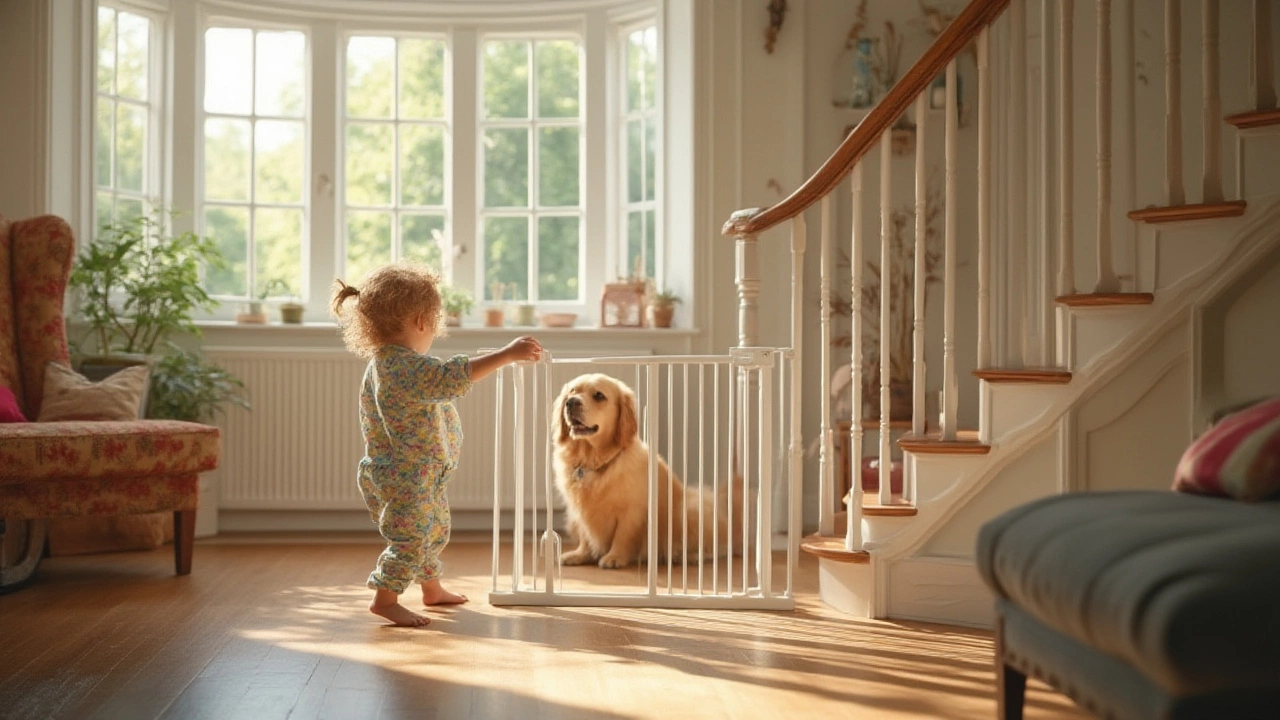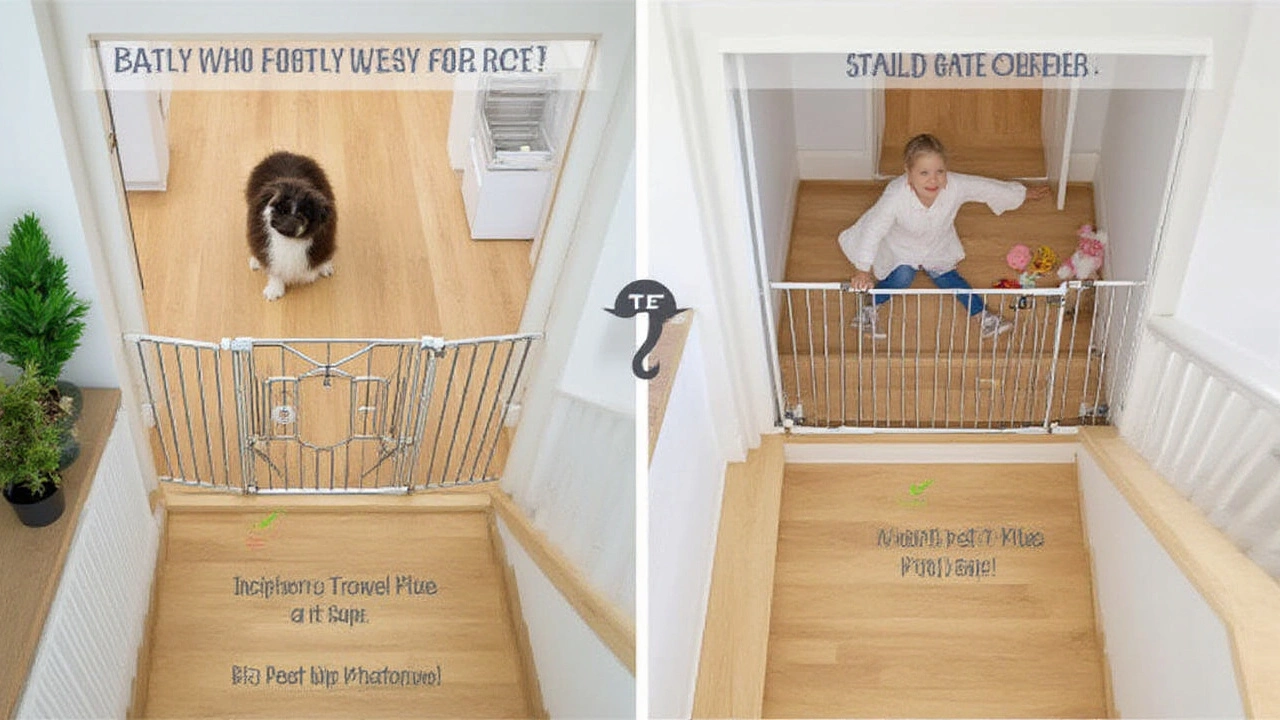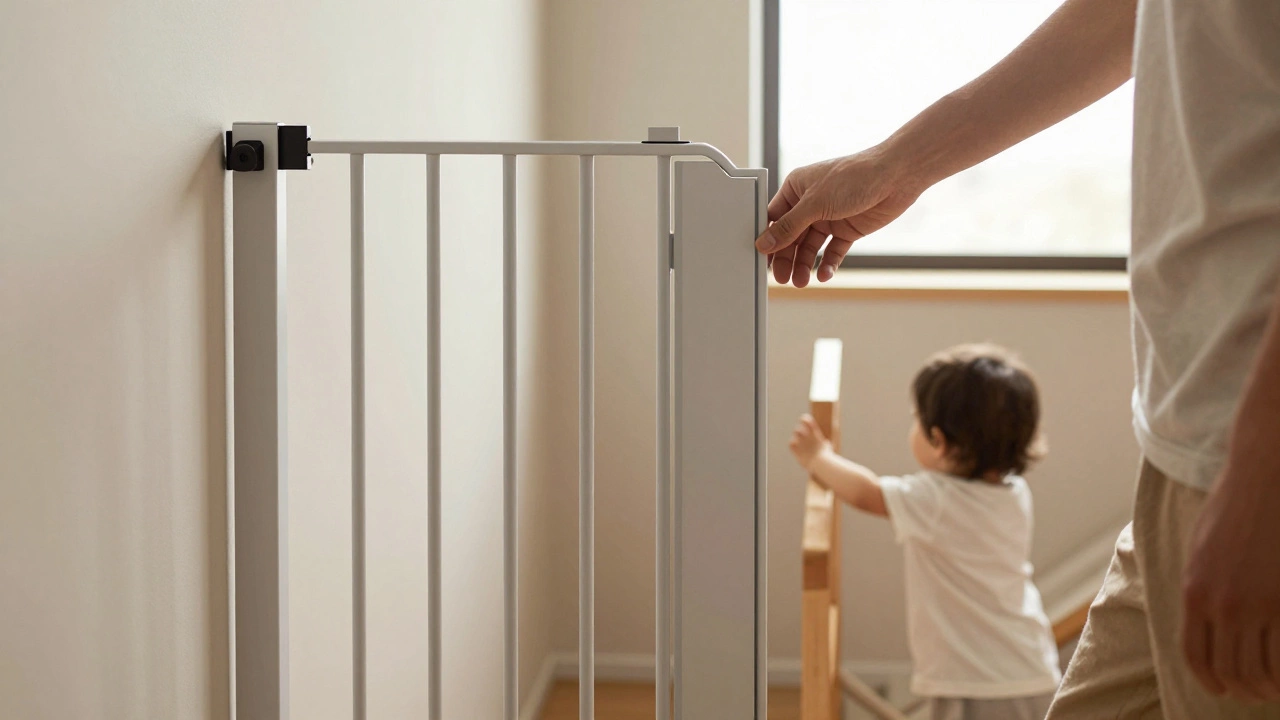Child Gates vs Pet Gates: Key Differences, Safety Tips & Buyer’s Guide

Ever tried taming a puppy tornado or keeping a toddler from launching herself down the stairs? If you have, you know that not all barriers are created equal. The pet aisle and baby section both shout about "gates" on their labels, but trust me, those names aren’t just for show. Here’s where things get sticky: a child gate keeps tiny humans safe, while a pet gate’s job is corralling your furry companions. Sure, they look similar at a glance — but mess up your choice, and your safety plan might fall apart (or worse, someone could get hurt!).
What Makes a Child Gate Different?
Child gates—often called "baby gates"—are designed with one big job in mind: protecting kids. These gates must meet strict safety rules, and you can’t just slap any old gate in the doorway. The Canadian standard (ASTM F1004) spells out that baby gates need vertical slats less than 3 inches apart, no footholds, tamper-proof latches, and nothing sharp or pokey. They’re built to survive science-loving toddlers who pound, kick, shake, and try to escape. You can usually find them made of sturdy metal, hardwood, or strong plastic—not lightweight wire mesh. Walk-through child gates are a lifesaver, since you won’t need to hop over them with laundry or groceries in hand.
But there’s more. Child gates used at the top of stairs HAVE to be hardware-mounted—that means drilling into the wall or banister. Pressure-mounted gates, the kind with rubber feet and no screws, just aren’t safe up high. Want data? In 2022, Health Canada recorded over 240 injuries involving children and falls down stairs, and many linked back to gates falling or being pushed aside. It’s not about being over-the-top; it’s about peace of mind when your back is turned. And don’t forget about kid-proof latches. Kids are clever (and sneaky). High-quality child gates almost always sport latch mechanisms that toddlers can’t figure out, like double actions or squeeze-and-lift locks. Pet gates rarely have these features.
Curious about actual designs? Look at the Regalo Easy Step Walk-Through Gate. It’s built for little hands to stay OUT and for adults to zip through easily. Also, the Evenflo Top of Stair Extra Tall Gate earned rave safety reviews, especially for stairs. Child gates don't just keep your little one safe—they prevent household chaos (just imagine maple syrup handprints everywhere if you give your toddler free run!).
How Pet Gates are Designed (And Their Quirks)
Pet gates sound the same at first glance, but dig into the details and the difference is obvious. The main job of a pet gate is to stop pets from sneaking into forbidden zones. They’ll keep the dog out of the dining room or stop the cat from tiptoeing up to the Christmas tree. But here’s the thing: pet gates aren’t subject to the strict child safety regs—builders get more wiggle room with their materials and designs. So, expect to see pet gates made with mesh, clear acrylics, or wire that just wouldn’t fly for kids.
Let’s get real—your average dog doesn’t have the thumb-skill or determination of a toddler. Pet gates sometimes come with smaller latches or push-to-lift handles. Some even feature handy flap doors or smaller gates so your little cat can stroll through while blocking your Great Dane. And about strength—if you own a determined husky, look for gates with chew-proof metal and reinforced joints, or you’ll end up with a shredded barrier. Height matters, too: pet gates go up to 48 inches (way taller than most baby gates) since jumpers like border collies can clear 30-inch gates while laughing in your face.
Here’s a quirky tidbit: you’ll sometimes see “pet gates” with vertical bars spaced farther apart. Small animals like ferrets or kittens can slink through, so always measure your critter before snagging the first cheap gate you see online. For bigger dogs, don’t skimp on the width or the gate may tip if a 70-pound Lab tries to leap. You’ll also find freestanding gates made for quick moves—handy if you’re always switching things up or renting and can’t drill holes.
| Type | Average Height | Bar Spacing | Latch Style |
|---|---|---|---|
| Child Gate | 28-32" | < 3" | Toddler-proof (double lock) |
| Pet Gate | 24-48" | Varies (up to 4") | Simple latch or slide lock |
One final thought: don’t rely on a pet gate to keep a small child safe. Dogs don’t usually climb. Kids invent parkour moves when you turn away. Don’t risk it.

When to Use Which Gate—And Why It Matters
If you’re shopping for the first time, this is the fork in the road. Home full of kids? Choose the gate specifically tested for child gate safety standards. That’s not negotiable if little fingers can reach it. Kids are always learning the art of escape—from climbing the bars to pushing heavy objects against the gate to scale over. Pet gates try to stop animals; child gates are built to outsmart humans who aren’t even tall enough to reach the table yet.
What if your home’s a circus (toddler, preschooler, and two rescue dogs)? You need both. Seriously. Use hardware-mounted child gates at stair tops and any room you don’t want the kids tumbling into, like bathrooms or kitchens. Put taller, heavy-duty pet gates across wide hallways or downstairs (no shame if your golden retriever tends to counter surf for cookies). Now, if your only "kid" is a well-behaved cat and you’re just stopping her from snoozing in the baby’s crib, a mesh pet gate with a mini door makes sense. But for literally any household with a child under four, never use a regular pet gate as your child barrier. The risk isn’t worth it.
If you hate holes in your walls, some brands promise pressure-mounted gates that claim “child-grade safety” for doorways. Just double-check the certifications and always try to nudge the gate hard before trusting it. Wobbly gates? Return them—seriously, don’t mess around. And remember: baby gates aren’t meant to replace supervision. Gates just buy you about 30 seconds for a coffee (or to wrangle a runaway puppy).
Tips for Choosing and Using the Right Gate
Let’s get practical. Picking the best gate isn’t about eye-catching colors or the trendiest Instagram look. Start by measuring your space—width, wall type, baseboards, and height needed. Wooden child gates blend better with classic decor but check for sharp corners and a tight fit. Metal is sturdy but heavier. If you’ve got creative climbers (furry or otherwise) always pick a vertical-slatted design rather than mesh, so there’s nothing to grab with toes or claws.
Keep a close eye on latch design. If your gate will live between the kitchen and living room, get a walk-through with a one-hand latch. For the top of stairs, never trust a pressure fit—you’re asking for trouble. If possible, test the latch at the shop; it should take some coordination, not brute force, to open, but still feel natural for you. For pet gates, consider if multiple pets of different sizes need access. Some gates feature two doors or a pop-up cat flap. And when in doubt, read real reviews by parents in your situation. You’ll spot warnings about easy-to-crack welds, gates that stain floors, and those rare unicorn brands that last for years (like Cardinal Gates and Dreambaby).
Don’t stop at installation—inspect gates weekly. Screws loosen. Pressure gates slip. Spilled milk warps wood. Replace old or wobbly gates right away to avoid accidents. And talk to older kids about the gates; if they try to "help" by opening a barrier for the dog, you could have double-trouble on your hands. As a bonus tip: label gates with colored tape for quick reminders. This is a life-saver during family gatherings or when grandparents babysit. Finally, stash a backup gate for emergencies—when your dog unexpectedly learns to open doors, you’ll thank yourself later.
Here’s a checklist if you’re picking a gate today:
- Check the product label for child or pet use (don’t improvise!).
- Measure your doorway/hall carefully.
- Decide if you need hardware or pressure-mounted gates.
- Test the latch; pick toddler-proof or pet-appropriate styles.
- Review the bar spacing (no more than 3" for babies, or your cat gets a free pass).
- Read reviews and avoid too-good-to-be-true sales online.
- Re-check the warranty and return policy, just in case.
In the end, child gates and pet gates are tools designed with totally different jobs. Use them wisely, and they’ll help you keep the chaos down and your loved ones—both furry and human—a lot safer.
